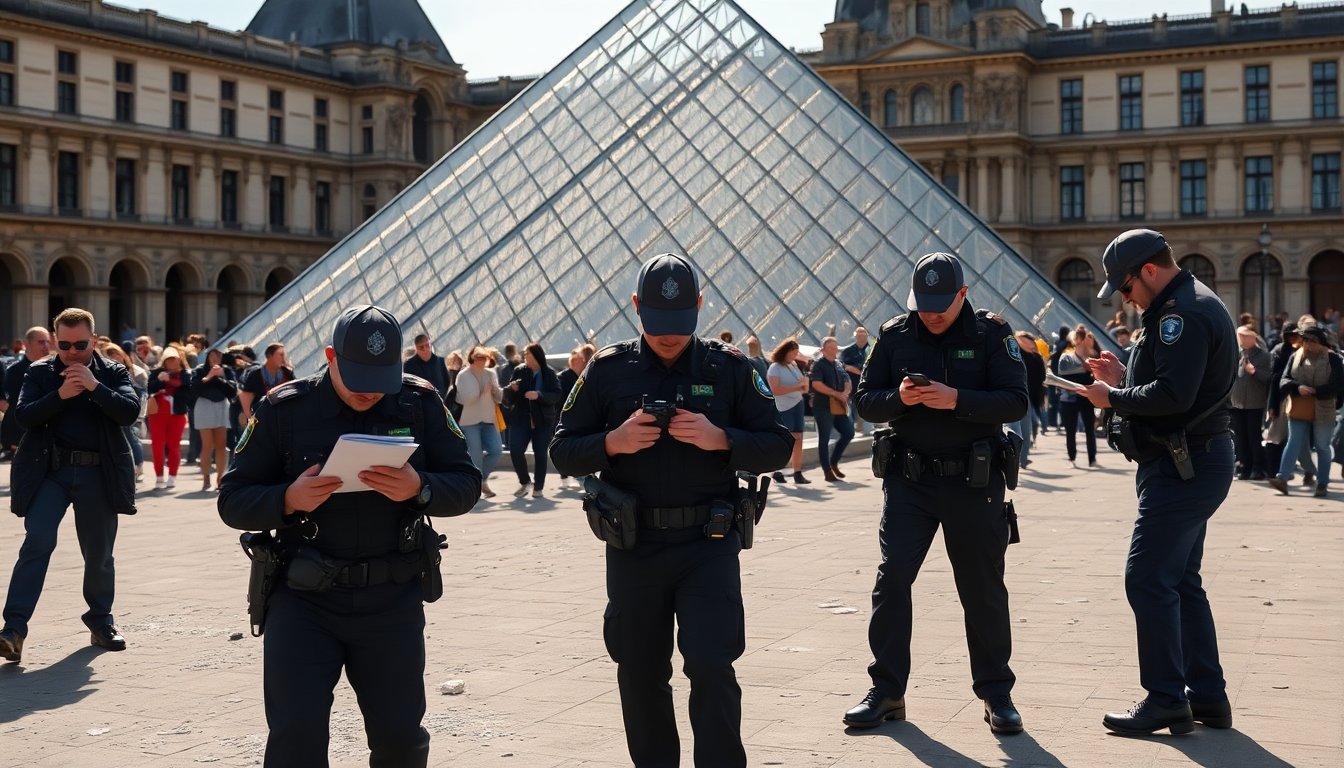Table of Contents
The world-renowned Louvre Museum in Paris experienced a significant security breach over the weekend. A group of thieves executed a carefully orchestrated operation, stealing a collection of invaluable jewels. This incident has sparked concerns regarding the security of cultural institutions worldwide.
The stolen items represent not just artifacts but are emblematic of France’s rich regal heritage and history.
On Sunday morning, four suspects arrived at the museum in a truck. They skillfully positioned a ladder to access the second floor and broke into the Apollon Gallery, which has displayed remnants of the French crown jewels since 1887.
In just seven minutes, they successfully executed their plan and disappeared with irreplaceable treasures.
The stolen treasures
The thieves made off with eight significant pieces, each steeped in history. Among these were two exquisite diadems, including one adorned with sapphires, along with a necklace and earrings once owned by two 19th-century queens.
Notably, they also targeted an emerald necklace and earrings previously belonging to Josephine, the second wife of Napoleon Bonaparte. They completed their heist with two brooches, one of which was owned by Empress Eugénie, wife of Napoleon III.
Interestingly, the thieves inadvertently dropped one of Empress Eugénie’s prized possessions—a stunning emerald-set imperial crown—which was later discovered outside the museum, albeit in pieces.
This crown, embellished with over 1,300 diamonds, exemplified the opulence of the French monarchy.
Impact and implications
The loss of these jewels is a cultural tragedy for France. Experts describe them as priceless, and their unique nature makes them nearly impossible to sell in their original form.
Potential buyers would readily recognize their historical significance. As a result, the fate of these items may involve disassembly, with precious metals melted down and gemstones recut, thereby obscuring their origins.
Historical context of art thefts
The heist at the Louvre reflects a broader trend of art theft.
High-profile robberies have long captured public interest, inspiring numerous documentaries, films, and books. One of the most notorious incidents occurred in 1911, when an Italian handyman named Vincenzo Peruggia stole the Mona Lisa, the museum’s most famous painting. It took two years for the iconic artwork to be recovered, underscoring the challenges of protecting cultural treasures.
In a more recent case, the audacious theft of the Big Maple Leaf, a 100-kilogram solid gold coin valued at around $6 million, took place in Berlin in 2017. The coin was ultimately cut into smaller pieces to evade detection. Such events highlight the vulnerabilities that museums face, regardless of their financial resources.
Heightened security concerns
The French government has reacted promptly to the Louvre heist, urging a comprehensive review of security measures at cultural institutions nationwide. Culture Minister Rachida Dati emphasized the necessity of shifting focus from visitor safety to the protection of artworks, advocating for enhanced security protocols to prevent similar incidents in the future.
Christopher Marinello, founder of Art Recovery International, pointed out that if the Louvre, one of the most well-funded museums globally, can be breached, then every museum is at risk. This incident serves as a wake-up call for institutions worldwide, prompting a reassessment of their protective measures.
As the investigation unfolds and authorities work to apprehend the culprits, the art world remains vigilant. The theft of these jewels not only signifies a considerable loss for France but also raises broader questions about the security of cultural heritage.





